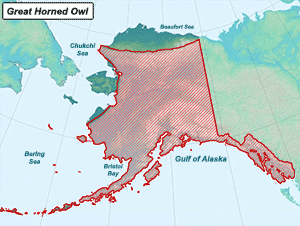Latin:
- Bubo virginianus
Subspecies:
Viewing Scale:


Great Horned Owls are found throughout North and South America, from the Arctic to the tropics. They are adaptable and can live in a variety of habitats, including forests, deserts, grasslands, and urban areas.